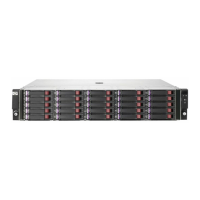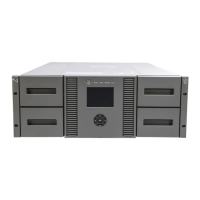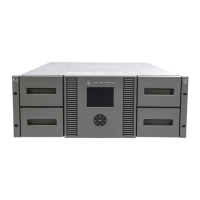Using the Embedded Web Server72
3. Select Switch > Parameters to display the Operating Parameters tab (Figure 39).
Figure 39 Switch page—Parameters tab
4. Set the switch parameters:
a. In the Preferred Domain ID field, enter a value between 1 and 31 (default is 1). The domain
ID uniquely identifies each switch in a fabric.
All fabric-attached switches must have unique domain IDs. If the value is not unique, the
E_Port connection to the switch segments and the switch cannot communicate with the fabric.
b. Select Enabled or Disabled from the Insistent Domain ID drop-down list. The default state is
disabled. This option is not supported unless the SANtegrity feature is installed.
If insistent domain is enabled, the domain ID configured in the Preferred Domain ID field will
become the active domain identification when the fabric initializes.
NOTE: If you enable Insistent Domain while the switch or director is online, the Preferred
Domain ID will change to the current active domain ID if the IDs are different.
c. Select Enabled or Disabled from the Rerouting Delay drop-down list. The default state is
enabled.
If rerouting delay is enabled, traffic is delayed through a fabric by the specified E_D_TOV
time. This delay ensures Fibre Channel frames are delivered to their destination in order, even
if a change to the fabric topology creates a new (shorter) transmission path.
d. Select Enabled or Disabled from the Domain RSCNs drop-down list. The default state is
disabled.
Domain register for state change notifications (domain RSCNs) are sent between end devices
in a fabric to provide additional connection information to host bus adapters (HBAs) and
storage devices. As an example, this information might be that a logical path has been
broken because of a physical event, such as a fiber optic cable being disconnected from a
port. Consult with your HBA and storage device vendor to determine if enabling Domain
RSCNs will cause problems with your HBA or storage products.
